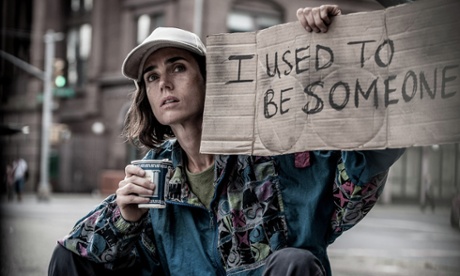
1 The best leads know how to bleed
Nothing reflects emotional turmoil better than sticking a foreign object into yourself, or pulling a bit of you out. Jennifer Connelly jabbed a hypodermic into her crotch for her role as an addict in Shelter. Wild saw Reese Witherspoon yanking out toenails as trail-hardened hiker Cheryl Strayed. Jeremy Irvine’s cute little mush bubbled up into blisters in the Mojave-based caper The Reach. Rarely do so many beautiful people make themselves look quite so rough in pursuit of their arrrrgggh!-t.
2 Don’t follow doctor’s orders
Questionable care was delivered by Paul Giamatti as Dr Eugene Landy, who doped up Brian Wilson (John Cusack) and screamed him into submission in the Beach Boys biopic Love and Mercy. Jake Gyllenhaal self-medicated with self-help in Dan Gilroy’s Nightcrawler, playing an ambitious young man who claws his way to the top of the LA TV news game, armed only with memorised tomes on personal growth. And John Cusack (again) offered massage-cum-psychotherapy as Stafford Weiss, handsy therapist to the famous in David Cronenberg’s Hollywood fever dream Maps to the Stars.
3 It’s time to talk to the animals
Those grunting and squeaking and squawking with the beasts included Justin Long, transmogrified into a walrus in Kevin Smith’s comedy-horror Tusk; Reese Witherspoon, howling at the moon with the wolves of Jean-Marc Vallée’s Wild; and Jessica Chastain, cavorting with Colin Farrell in Miss Julie, Liv Ullmann’s adaptation of the August Strindberg play. We’re not being unnecessarily cruel to Farrell – upper-class Miss Julie (Chastain) compares dallying with the lower orders to bestiality. Not that that stops her. Classy bird.
4 Oxbridge is full of rich, smart people
On the off-chance Oxford and Cambridge need a hand with the recruitment drive, here comes a legion of films telling us how marvellous they are. The Riot Club, Lone Scherfig’s film about Oxford’s Bullingdon Club, attempted to dissect the system that gave us Cameron and Osborne. Instead, its emphasis on romance over politics was a boon for grand old (classist) tradition. The Theory of Everything had Stephen Hawking (Eddie Redmayne) uncovering the secrets of the universe from the comfort of his Cambridge digs, while The Imitation Game set up Bletchley Park as a collegiate stronghold for fresh-from-the-quad Alan Turing (Benedict Cumberbatch) and chums to crack Jerry’s damned-clever Enigma code. They are tea-towel movies: familiar templates decorated with exotic scenes. North America should snap them up. UK viewers who didn’t study at either, however, will feel dead common.
5 Film <3s the internet
Film breaks the “don’t show – tell” mantra when it comes to mobile technology. Jason Reitman’s Men, Women and Children explored the perils of the internet by plastering the screen with tweets, URLs, texts and chat windows. Rosewater, Jon Stewart’s film about Iranian journalist Maziar Bahari, spread the news of his incarceration with a flurry of web headlines, while Rosario Dawson, playing another journalist in Chris Rock’s Top Five, diligently thumbed text messages to “Editor” that popped up as text. Don’t let a mobile phone ruin your movie? Way too late for that.
6 Chronic illness is making healthy comeback
Nobody was well. And things only got worse. Julianne Moore played a Columbia university lecturer experiencing early-onset Alzheimer’s in Still Alice. Anthony Mackie’s Nigerian immigrant battled debilitating asthma in Paul Bettany’s Shelter. And Jennifer Aniston’s car-crash victim was left with terrible backpain in Cake. Whether wincing, weeping, huffing or puffing, this was a chance for each actor to show off their (perfectly healthy) acting chops.

